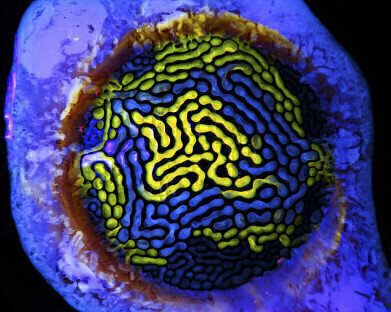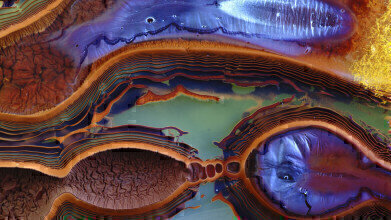-
 Ferrofluid Glowing Multicolour: Ella Main (UK)
Ferrofluid Glowing Multicolour: Ella Main (UK) -
 Liesegang rings: Gabriel Keleman
Liesegang rings: Gabriel Keleman
News & Views
Call for Entries: Science Photographer of the Year 2019
Jun 04 2019
The Royal Photographic Society is now accepting entries for its Science Photographer of the Year competition 2019.
Open to all ages and levels of expertise, the competition has two categories; Science Photographer of the Year and Young Science Photographer of the Year (18 years and under).
Entrants are required to take a visually appealing picture that tells a science story either with a camera or smart phone. The winners will be announced at an event in London in October.
The winning photographs will be chosen by an expert panel of selectors including TV Science Presenter Dallas Campbell.
RPS Science Exhibition Coordinator, Gary Evans said, “The competition is open to everyone. We are looking for images from all ages that tell a story about science – how it is used, how it looks or how it impacts people’s lives. Fun or serious, the selectors will be looking for the story behind the picture as well as the visual impact it makes.”
Dallas Campbell added: “I am delighted to be involved in this competition. Science is all around us whether it be engineering, astronomy, the microscopic world or nature and what’s great is that you don’t even need professional camera equipment to capture it. The competition makes science accessible to everyone via the readily available medium of photography and I am really looking forward to seeing the entries we receive.”
The competition is £15 to enter (£12 for RPS members) and up to five images can be uploaded. Entry is free for 18s and under. Simply register and upload images at science.rps.org. Closing date is midnight on Friday 19th July 2019.
In the 2017 competition Ella Main (UK) won the Gold Award in the 17 & Under category with her image: Ferrofluid Glowing Multicolour, showing A mixture of ferrofluid and liquid from a glow stick. Ferrofluid is a colloidal liquid containing iron nanoparticles in an organic solvent. Glow sticks typically contain phenyl oxalate, hydrogen peroxide and a fluorescent dye. When these two fluids were placed together, they formed a complex self-organised pattern. The mathematics behind this were first described by Alan Turing as an explanation for, among other things, stripes on animal skin.
The entry from Science Photographer of the Year 2017 winner Gabriel Keleman, was one of the 100 shortlisted images (including the winners) that was exhibited at Science Festivals across the UK and at the Royal Albert Hall. In the reaction Gabriel Kelemen photographed, a mixture of potassium dichromate, silver nitrate and cerium sulphate were added to a gelatin solution. Named after the German chemist Raphael Liesegang, the blue Liesegang rings seen here are formed in many precipitation reactions, where two liquid solutions are combined and a precipitate - or solid - is created.
Digital Edition
Lab Asia 31.2 April 2024
April 2024
In This Edition Chromatography Articles - Approaches to troubleshooting an SPE method for the analysis of oligonucleotides (pt i) - High-precision liquid flow processes demand full fluidic c...
View all digital editions
Events
Apr 22 2024 Marrakech, Morroco
Making Pharmaceuticals Exhibition & Conference
Apr 23 2024 Coventry, UK
Apr 23 2024 Kintex, South Korea
Apr 23 2024 Seoul, South Korea
Apr 24 2024 Jakarta, Indonesia



.jpg)













